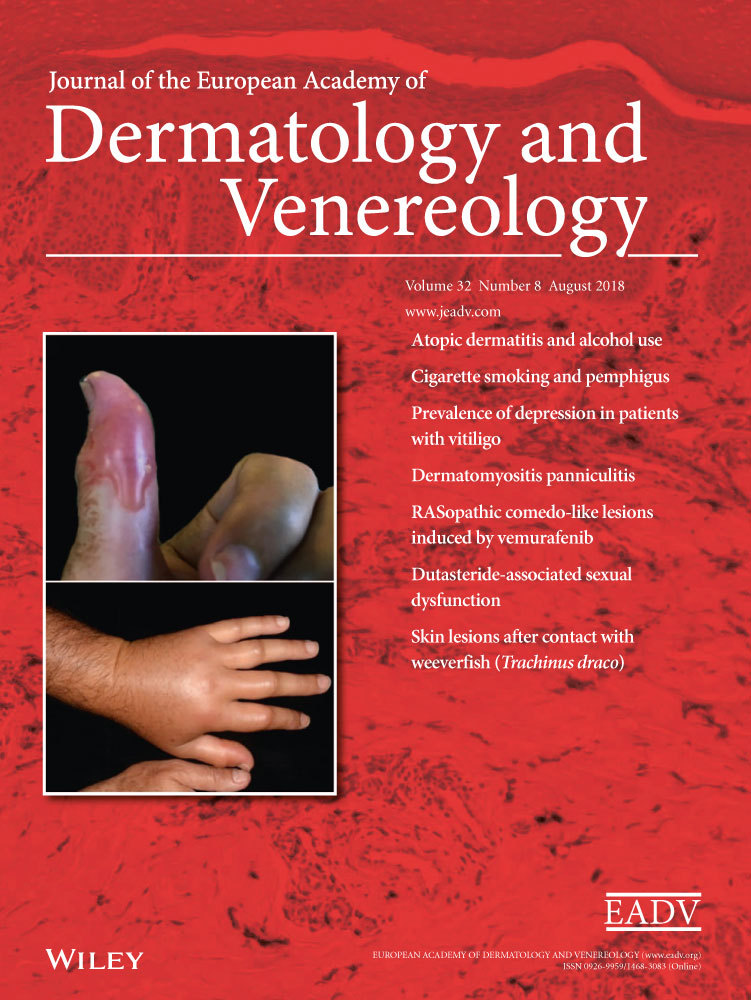The prevalence and odds of depression in patients with vitiligo: a meta-analysis
Conflicts of Interests
The authors report no conflict of interests.
Funding sources
None declared.
Abstract
Objective
The objective of this study was to provide a pooled estimate of the prevalence and odds of depression in patients with vitiligo.
Methods
A systematic literature search of Medline, Embase and Cochrane library databases was conducted. The proportions and mean questionnaire values for depression were pooled according to different evaluation methods. In controlled studies, odds ratio and standardized mean differences compared depression in vitiligo patients with healthy controls.
Results
One thousand nine hundred and sixty-five patients were identified from 20 eligible cohorts to be included in the present meta-analysis review. Sample sizes ranged from 30 to 308 for each analysis. The pooled prevalence of depression across 17 unique populations (n = 1711) was 29% (95% CI 20–39). The prevalence of clinical depression was 8% (95% CI 2%–14%) using Diagnostic and Statistical Manual of Mental Disorders IV or International Classification of Diseases codes-10, and the prevalence of depressive symptoms was 33% (95% CI 23%–44%) using validated screening inventory and rating scales. Patient with vitiligo was 4.96 times more likely to display depression compared with controls. Subgroup analysis showed that the prevalence of depression in Asian and female patients with vitiligo was significantly higher than that in Caucasian and male ones. The pooled prevalence of depressive symptoms was higher (56%, 95% CI 0.5–0.62), and the heterogeneity was lowering cases with Hamilton Depression Rating Scale (HDRS) questionnaire when compared with other questionnaires.
Conclusions
This meta-analysis review indicates that the prevalence of depression is high in patients with vitiligo. The HDRS questionnaire may be the most sensitive tool for testing the depressive symptoms among patients with vitiligo.




